Kedarkantha Trek- 2025 | Package, Best Time, Distance & All
Region: Uttarakhand
Base Camp: Sankri
Duration: 5D/4N
Altitude: 12,500 ft
Grade: Easy – Moderate
Distance: 20 km
Kedarkantha Trek Description
The Kedarkantha Trek is one of the best beginners friendly trekking experiences and most popular winter treks in Uttarakhand, India. Popular among adventurous trekkers, it’s located within Govind Wildlife Sanctuary & National Park in Uttarkashi district of western Garhwal Himalayas. The trek is famously known for its beautiful winter landscapes, scenic snow covered trails, outstanding campsites, camping experience near the frozen lake, healing & peaceful moment with nature, unforgettable experience of mid-night hiking, adventurous & a tough summit push, and panoramic views of the Himalayan peaks from top of the Kedarkantha summit. These all features make it a perfect snow trekking destination.
Reaching a maximum altitude of about 12,500 feet above sea level, the Kedar Kantha peak provides a rewarding 360-degree view of the mighty Himalayas, including Mt. Swargarohini, Mt. Bandarpoonch, Black Peak, Ranglana Range, and Yamunotri Range—a true achievement of the challenging summit climb.
The trail to the Kedarkantha Peak starts from the village of Sankri (around 200 km away from Dehradun), and takes 3-4 days to complete the entire trek route. Starting and ending at the same point in Sankri, the trek route gradually ascends till the Kedarkantha Basecamp and continues with a difficult summit climb to the top of the summit. It passes through the beautiful dense forests of oak, rhododendron, and pine trees, a frozen lake of Juda Ka Talab, the row of meadows, untouched stretches of snowy fields, many water streams, and a steep & rewarding ascent of the summit climb.
Trekkers journey through breathtaking terrains, witnessing the stunning Rupin Valley and Har Ki Doon Valley, and experiencing the magic of snow-capped mountains. Along the trail, these snow-covered landscapes, picturesque valleys, and serene natural surroundings provide an opportunity to connect deeply with nature. The sunrise views from the summit, especially under bright sunshine and clear skies, create a truly once-in-a-lifetime experience.
Kedarkantha Trek is often considered the perfect trek for beginners, thanks to its manageable difficulty and well-marked trails. The trek presents an exciting blend of adventure and accessibility, making it suitable for both beginners and seasoned trekkers. Winter, especially from December to April, is the best time to visit, as the trail transforms into a winter wonderland. The region experiences good snowfall, and the paths filled with snow add to the charm of the journey.
Trekking in December, during winter, temperatures range from 5–10°C during the day and drop to around -5°C or lower at night, offering trekkers the chance to truly experience what winter feels like. The trek is also an excellent way to disconnect from technology and immerse yourself in the beauty of the Himalayas.
The trek begins with a scenic drive from Dehradun, passing through Mussoorie, Mori Valley, and pine forests on the way to the base village Sankri. The dense forests, villagers, and the unique wooden architecture of local homes provide glimpses into the region’s culture and mythological stories. Many trekkers find this immersion into local life deeply enriching.
The summit push is undoubtedly the highlight, as it offers a sense of victory and a rewarding experience for all. Whether you’re new to trekking or a seasoned adventurer, the Kedarkantha trek is an exceptional combination of nature, culture, and adventure. The trek’s multiple routes and options for experienced guides ensure safety and support, enhancing the experience for all trekkers.
Kedarkantha Trek is not just a journey, but an exploration of its diverse flora, culture, and terrain through the Himalayas. Whether you’re seeking a rewarding experience of climbing a mountain peak, basking in sunrise views, or enjoying the serenity of snow-covered trails, Kedarkantha is a must-visit trekking destination in India.
Kedarkantha Trek Itinerary (5D/4N)
Drive Distance: 185 km
Drive Time: 9-10 hours
Pick Up: Prince Chowk, Dehradun
Altitude: 6,400 ft
The pickup is included in our Kedarkantha trek package, so you just have to reach Dehradun. For the convenience of everyone coming through different modes of transport, the pickup point is Prince Chowk.
As the journey is long for Sankri, we will start our day early in the morning while enjoying the scenic drive. On our way, we will cross famous hill stations like Mussoorie, and from there, the Yamuna River will accompany us to Naugaon. Don’t worry, another ethereal beauty River Tons, will join us from Mori to all the way till Sankri.
Sankri is a beautiful village surrounded by Himalayas and forest, creating a picture-perfect atmosphere. The village serves as a base for various other treks like Har Ki Dun, Ruinsara Tal, Bali Pass, etc. After reaching Sankri by the evening, you are free to explore.
We will end our day with a hot dinner and rest well for tomorrow.
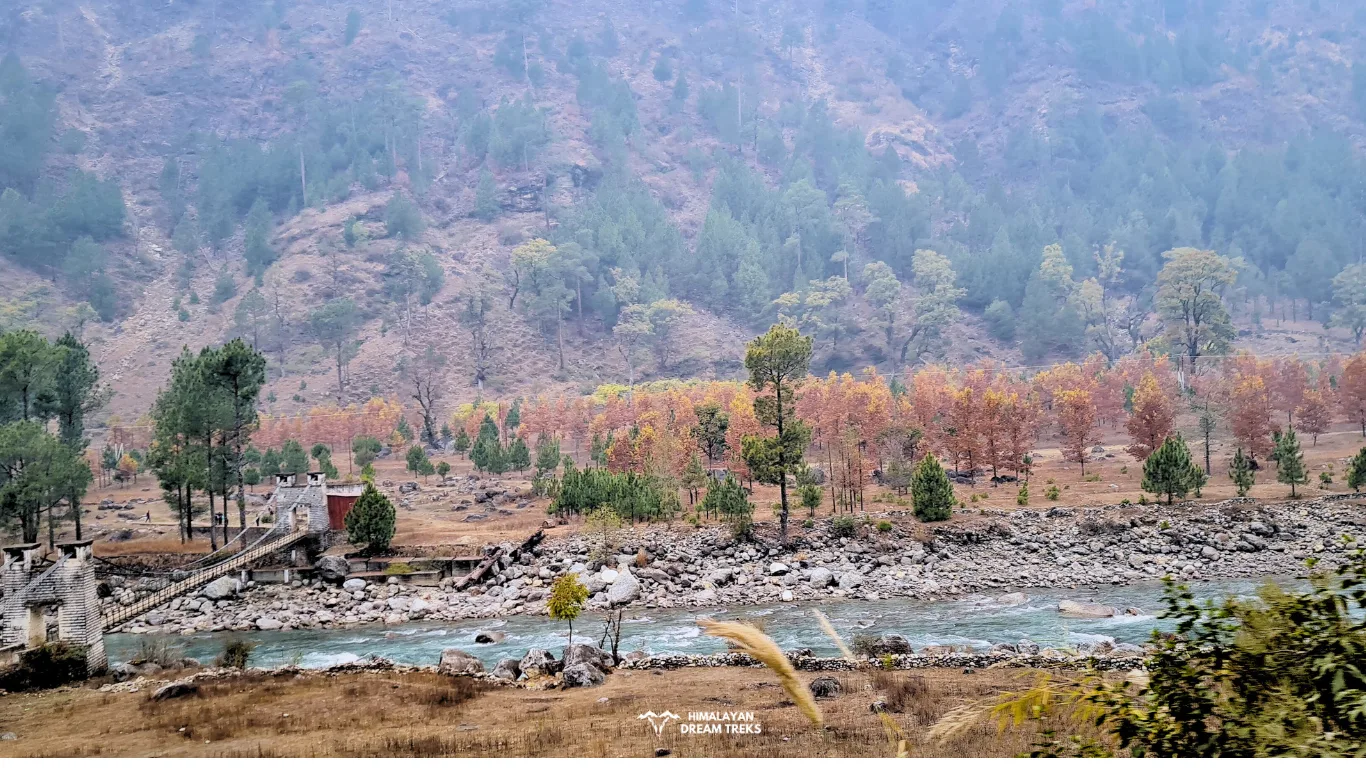
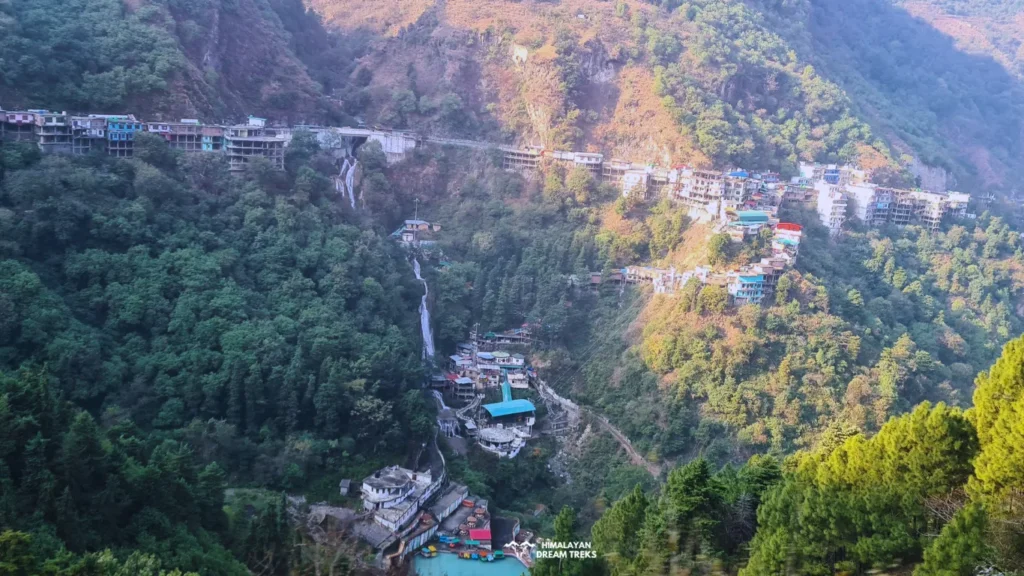
Trek Distance: 4 km
Trek Time: 4-5 hours
Altitude Gain: 2,750 ft
Altitude: 9,100 ft
Today marks the starting day of our trek as we will leave our cozy beds and head out for our first campsite – Juda ka Talab via Saud. After a delicious breakfast, we will start our ascend. The hike will be covered in snow, greenery, and different colours, depending on your chosen time of the year.
Juda ka Talab is a high-altitude lake surrounded by a thick forest of oaks, maple and pine. The lake is said to have formed when Lord Shiva opened a strand of hair from his bun, and water droplets fell from it, creating this lake. There are several other interesting tales related to this beautiful lake, but the fact that it is a lovely lake remains true.
We will finish off our day with a hot dinner while sharing stories and rest for the night.


Trek Distance: 4 km
Trek Time: 3-4 hours
Altitude Gain: 2,150 ft
Altitude: 11,150 ft
The next day, wake up early to enjoy the glow of sunrise and freshen up for the day. Today, we will head for Kedarkantha Base Camp & closer to the summit.
The hike won’t be tiring, but it is not a cakewalk. Giant trees and the Himalayas will accompany you while motivating you to be strong. After walking through the dense forest, the trail will open to an open field, which will be our campsite.
We will have our dinner early and sleep because the next day, we have to wake up at 3 am to chase the sunrise on the peak.
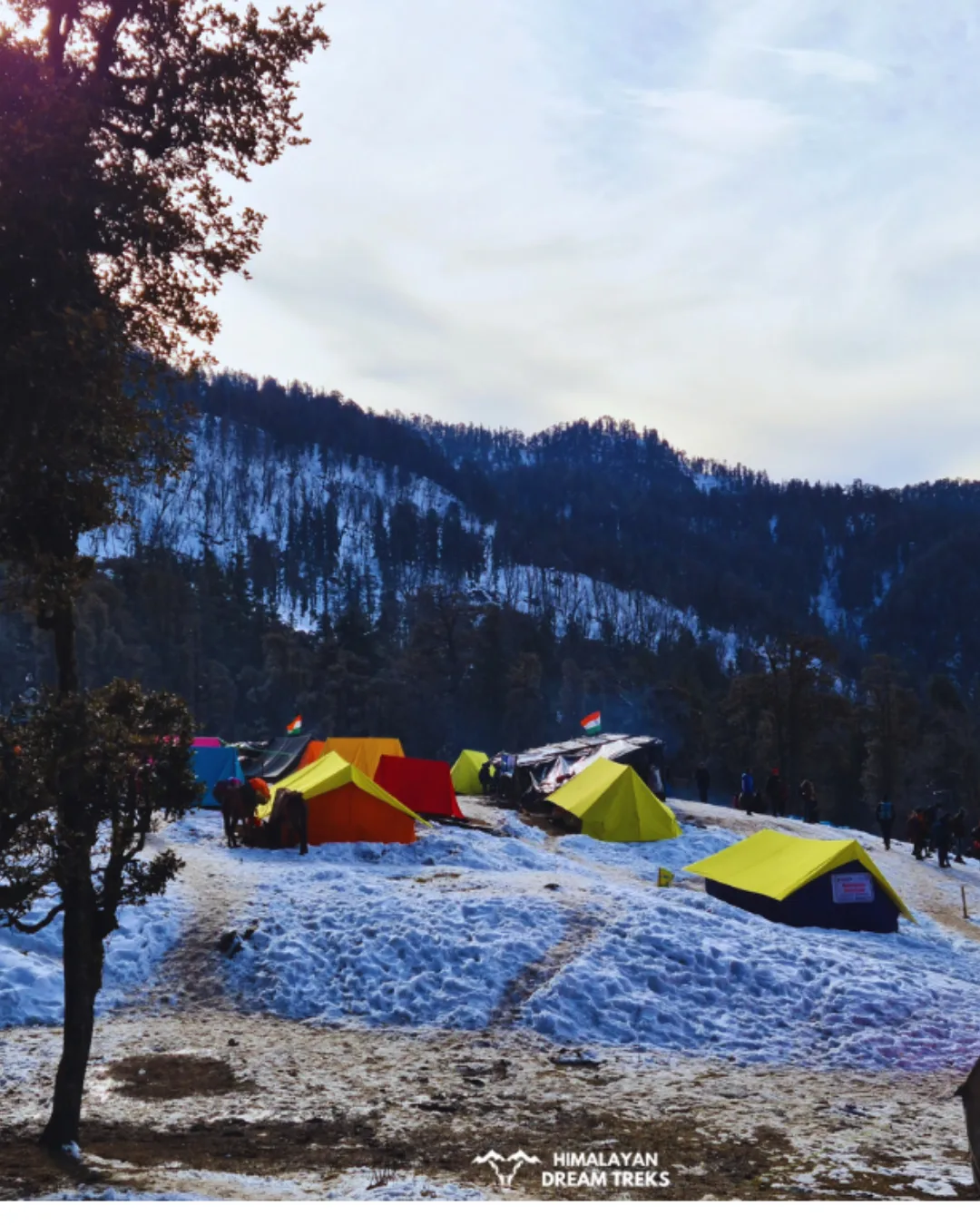
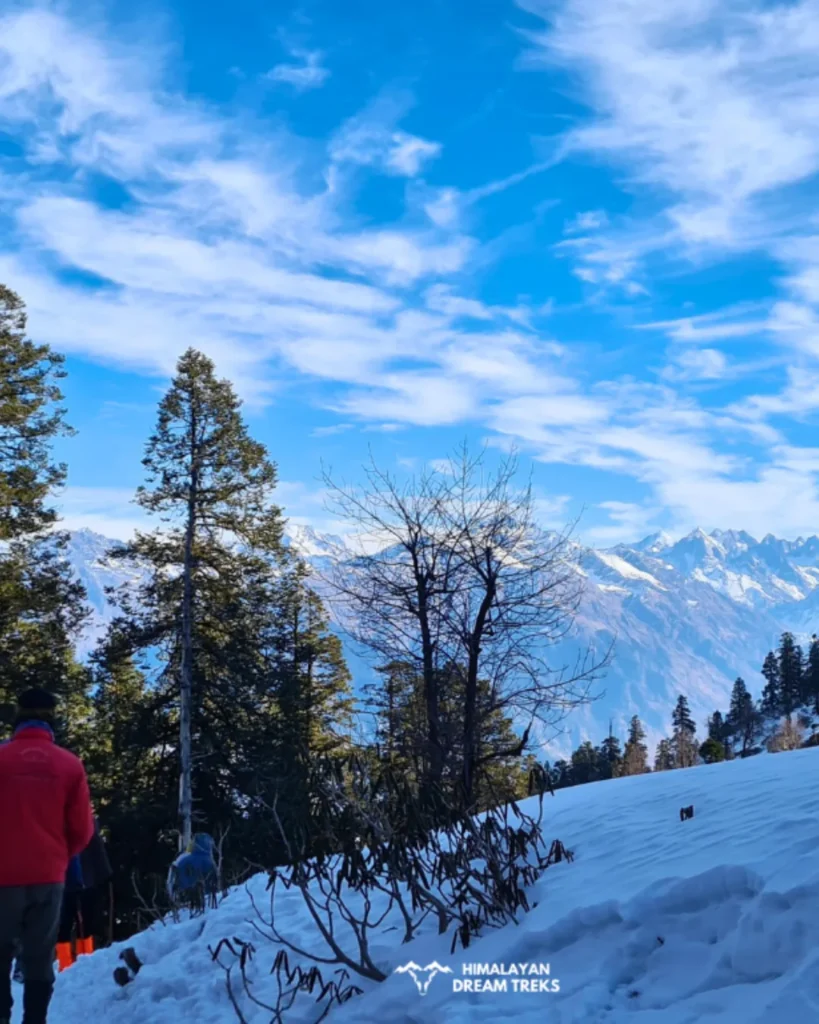
Trek Distance: 12 km (4 km ↗ + 4 km ↙ + 4 km ↙)
Time: 7-8 hours
Altitude: 12,500 ft
As mentioned earlier, we will begin our day early at 3 am and get ready for the most exciting part of the trek – Summit Climb. Whichever season you choose, it will still be a bit cold in the morning, even in summer or spring, so pack your clothes accordingly. During winters, the weather will be harsher, and the snow will reach your knees; it is advised that you rent proper gear and equipment like crampons and gaiters.
After hiking for around 4 km with a final inclination climb of 40° to 60°, you will finally reach the summit. Seek blessing from the small Kedarkantha temple made of stone arrangement of Lord Shiva and Goddess Parvati. Relish in the most beautiful sunrise from a Himalayan Mountain Peak and discover yourself.
From the summit, enjoy the 360° views of the Himalayas and try to identify peaks like Swargrohini 1,2,3, Bandarpunch & Kalanag. You can also see Har Ki Dun and Rupin Valley from the top.
We do believe in living in the moment, but capturing them to preserve the memories forever is also essential. After clicking on many photos and videos, we will start our descent.
We will head for our favourite Juda ka Talab and spend another beautiful night under twinkling stars after a hot & delicious supper.
Trek Distance: 4 km
Trek Time: 3 hours
Drive Distance: 185 Km
Drive Time: 9-10 hours
After the well-deserved night’s rest and breakfast, we will start our final block of descent and head back to Sankri. From Sankri, we will bid final goodbye to the mountains with a promise to return back soon and leave for Dehradun via the same route we came.
Kedarkantha Trek Package (Dehradun to Dehradun)
Price Includes
- Accommodation for 4 nights: Stay is included from Day 1 to Day 4 (base camp to base camp). It includes camping for three nights during the trek and a homestay, guesthouse, or hotel at Sankri on Day 1 for one night on a triple-sharing basis. Single and double-sharing options are available at an additional cost.
- Transportation from Dehradun to Dehradun): Transport from Dehradun to Sankri base camp and back is included.
- Meals: Meals from dinner at Sankri on Day 1 to breakfast at Sankri on Day 5 are included.
- Trek Equipment: All essential trek equipment is included, such as sleeping bags, kitchen and dining tents, utensils, mattresses, personal tents, toilet tents, and crampons (if needed).
- Forest Entry and Permits: All required fuel charges, tolls, forest entry fees, and permits are covered.
- Experienced and Certified Guides: A qualified, professional team, including a mountaineering-certified trek leader, guide, cook, and support staff, will accompany you.
- Emergency Kit: First aid medical kits, oxygen cylinders, and stretchers are provided to ensure the safety, comfort and well-being of all participants.
- Trek Certificate & HDT Badges: Receive a trek certificate and HDT badges to celebrate your adventure.
- GST (5%): Included in the package cost.
Price Excludes
- Meals during Transfer: Meals are not included while traveling to and from the trek starting points.
- Emergency Evacuations: Any charges related to emergency evacuation are not included.
- Personal Expenses: Any meals or accommodations outside of the provided itinerary or additional services not listed in the inclusions.
- Personal Luggage Carrying: Charges for mules or porters to carry personal luggage are NOT included in fees.
Add-ons
- BackPack Offloading – INR 1450 for the entire trek
- Insurance – Starting at INR 380 per person
- Transport – INR 1500 (for Sankri to Sankri package)
The trek package includes essential services such as transportation, accommodations, meals, professional guides, permits, first aid, and necessary equipment. However, customization is available for those seeking a hassle-free vacation, allowing you to add services or tailor the package inclusions to suit your preferences.
Check the booking procedure here, including details on booking deposits, payment terms, and the cancellation policy.
Complete Information of Kedarkantha Trek
In this section you can find each and every detail about this trek, whether you’re finding information or booking this trek, you can get valuable insights here.
The best time for Kedarkantha Trek is during the winter months, especially from December to April, when the entire trail is covered with snow. Although the months between December to February are the coldest and the temperature remains below zero at night, this is the time when the landscape around the trail turns into a wonderful paradise. During this time, thick snow covers the trail, and trekkers can enjoy fresh snowfall. Sometimes the path becomes a bit difficult due to heavy snowfall, but it is very much liked by trekkers as it adds thrill and challenge to the trek. Trekkers can enjoy walking on the snow and see the snow-capped peaks visible from a distance. The sunrise from the mesmerizing peak is breathtaking, offering views of the mighty Himalayan peaks under bright, clear skies. Though these months are mostly cloudy, if you are lucky, you can enjoy the bright landscapes under clear skies. The campsites are covered in a blanket of snow, and near Judha Ka Talab, trekkers can even walk on the frozen lake. This is the best time for Kedarkantha trek and is preferred by both beginners and experienced trekkers as they get to enjoy the trek amidst unmatched Himalayan serenity. However, the harsh weather conditions demand proper preparation, which includes layers of clothing to deal with the cold nights, snow walking skills, etc. There may be a temporary suspension of the trek in case of excessive snowfall. Though the trek is accessible throughout the year, it is advisable not to go on this trek during monsoons.
Every season brings a different colour palette for the trek, so choose what you want to see.
Months – December to Mid-March
Temperature – Day: 8℃ to 10℃, Night: -10 degrees
Kedarkantha is the most famous winter trek in Uttarakhand for all the right reasons. During winter, the trail will be covered in thick sheets of snow. The days will be filled with cold winds, and nights will dip even lower in winter. Weather conditions during these months create a perfect atmosphere for snow and snowfall, resulting in a picture of white surroundings, a frozen lake and the mighty Himalayas in the background.
Kedarkantha Trek gives you the best opportunity to experience a winter trek, even if you are a beginner. It is not a technical trek, but you can still go to a snow summit. For seasoned trekkers, it is a joyful trek that is enough to fill your thrill levels.
This is a balanced trek combined with the perfect time of snow, teaching you how to walk in snow, make tents and overall live in a snow-covered world.
Months – March to April
Temperature – Day: 15℃ to 18℃ | Night: 0℃ to 5℃
The snow will start melting during this time, with rising temperatures and life and greenery returning to the area. You will encounter a splash of colours as various flowers begin blooming & the main highlight will be the bright pink, scarlet and oranges of Rhododendrons.
Spring is also a perfect time to enjoy mild cold weather, greenery and colours which will fill your heart with the backdrop of the Great Himalayan peaks.
Months – May & June
Temperature – Day: 18℃ to 24℃ | Night: 3℃ to 8℃
Bright sun and clear skies welcome you in summer on your trek. This is a perfect time to do this trek as it will be less crowded, leaving the trails, lake and summit all to yourself.
Summer won’t be scorching hot, and you will feel light, cool evening breezes. By the end of June, some pre-monsoon showers might catch up with you, so be prepared with raincoats or ponchos.
Months – September to November
Temperature – Day: 10℃ to 15℃ | Night: 0℃ to minus 5℃
Right after the monsoon season, the trek will remain fresh & green in September and October. The trails still be charged with greenery and colours, and the fragrance of maple and pine will linger in the air, adding more to your experience.
In November, the temperature won’t be harsh but you can feel the cold and the upcoming winter days.
Kedarkantha Trek is an easy to moderate level trek, perfect for both beginners and seasoned trekkers. The trek is easy because it is not a long trek, with gradual ascending every day, not difficult gradient terrain, and no long walking days except for summit climbing, even that is not technical.
A moderate level is considered because of the summit climb, which is steep at an inclination of 40° to 60°. This part of the trek is challenging but not technical, making it perfect for experiencing a summit climb of an altitude of 12,500.
As a prominent winter trek, walking in thick snow also takes it to a level higher than easy; it will challenge you both physically and mentally.
All trekkers are advised to start following a workout routine, a combination of both strength training and cardio. Being physically fit will help you enjoy the trek more without wasting time gasping and panting.
Treks are all about fun, adventure, finding yourself, etc, but only for those who are mentally and physically fit. Because activities like treks, especially a Himalayan trek, challenge you on different levels in unimaginable ways and situations.
KedarKantha trek falls under easy to moderate level trek depending on your chosen time of the year. In summer, spring & autumn, you will find this trek easy. Known as one of the best winter treks in India, the snow takes the difficulty a level higher, making the preparation mentally and physically more important.
The trek difficulty dictates your level of fitness and preparations for it. As mentioned above, it can be an easy and easy to moderate level trek so prepare accordingly.
We take acclimatisation seriously and make sure that our trekkers get proper time to acclimatise and rest in between. We will only trek for a short number of kilometers every day, giving your body the time it needs.
In the beginning, the ascend from Sankri to Juda Ka Talab campsite can be challenging as it is going to be your first day and changing altitude. The good part is that the trail is easy to follow, and the terrain is manageable, even for kids. Facilitated with a proper workout regime you can really take note of the surrounding environment and not waste time in catching your breath.
For summer, spring, and autumn seasons, you can follow an easy-level fitness routine.
For Winter, you have to workout more because of the added difficult factors like cold climate, snow, and fog. The trails will have some snow in the beginning which will be hard in nature and hence slippery too. Moving forward, at the higher level the snow may reach your knee or waist level, and walking on powdery snow takes the test of your balancing skills, stamina level, endurance, and overall strength of your body.
- An easy level and weekend treks require a basic fitness level, where you should focus on building your stamina and strength. Start with walking/running and include a 45-minute to 1-hour workout (cardio + strength training).
- A level-up in a fitness routine is required for an easy to moderate level trek like start aiming to run 5 km in under 40 mins, and strength training is a must.
Mental preparation includes thorough research of the trek you want to do or decide to. Understand the terrain, difficulty level, and the ways to get fit for it, look up for sudden situations that may happen, and how to tackle them. Being prepared gives you an edge to keep calm & handle a difficult situation.
- Exercises to achieve the goal
Cardiovascular Training: Running, cycling, and swimming to boost stamina.
Strength Training: Focus on leg exercises like squats, lunges, and step-ups for endurance.
Core Strength: Planks, mountain climbers, and Russian twists to maintain balance on uneven trails.
Flexibility Exercises: Stretching, yoga, and dynamic warm-ups to prevent injuries.
Mental Conditioning: Visualisation techniques, breathing exercises, and meditation to strengthen focus and manage stress on difficult days.
Tip: For moderate to difficult-level treks, practice exercises with weights. Seek professional advice accordingly.
- Extra Tips related to the diet, muscle recovery, and healthy lifestyle routine.
Diet: Incorporate proteins like lentils, eggs, paneer, whey protein, etc for fast recovery after a strenuous trek. Whole grains like wheat, barley, etc for sustained energy, and leafy greens like spinach, bitter guard, and any seasonal veggie for those extra nutrients and building the immunity system.
Muscle Recovery: Plan rest days and add stretching, relaxing yoga poses or foam rolling after every workout.
Lifestyle Routine:
Limit alcohol and caffeine consumption.
Start sleeping upto 8 hours.
Stay hydrated – drink 2 to 3 liters of water. To incorporate more nutrients, including coconut water, fruit, and vegetable juices.
Altitude Sickness happens when your body cannot adjust to lower oxygen levels at higher altitudes. This happens mainly because your body doesn’t have enough time to acclimatize to a higher altitude or not enough time to get used to lower oxygen levels.
How to Prevent –
- Gradual Ascent: Climb slowly to give your body time to adjust.
- Hydration: Drink plenty of water to prevent dehydration.
- Rest and Sleep: Ensure ample rest, especially as you reach higher camps.
- Avoid Alcohol: Limit alcohol and caffeine, which can lead to dehydration.
What to do –
- Most Important – Inform your trek leader as well-trained leaders and experience they can assess the situation better and find solutions faster.
What trek leader may suggest. Trekkers without agency should also know these instructions –
- Stop and Rest: Pause your trek to recover.
- Descend if Necessary: Descend immediately to Sankri Basecamp, our team with the vehicle and necessary help will be there for further action.
- Stay Hydrated: Drink water and avoid strenuous activity.
- Seek Medical Help: After descending our team will take you to the nearest hospitals if needed. If solo, then descend and seek the closest medical help.
- Nearest Hospital Details –
- Government Hospital, Mori
Address – 229V+WQQ, Mori-Sankari Rd, Mautar, Uttarakhand 249128
- 45-60 Ltr Bag Pack With Rain Cover & Comfortable Straps
- 20-30 Ltr Day Pack with Rain Cover
- Head Torch
- Waterproof Trekking Shoes
- Trek Pant
- 1-2 Trekking Pole
- Down Jacket
- 1 Poncho or Rain Coat
- Tiffin Box for Packed Lunches
- 1 Hydration Pack / Hot & Cold Water Bottle Like Borosil & Milton
- 1 Sun Cap
- 1 Head Torch
- Sunglasses (UV Protected)
- Tiffin Box for Packed Lunch
- 1/2 Pair Thermals
- 2/3 Full Sleeves (Non-Cotton)
- 1 Fleece Jacket (Woollen Or Sweater)
- 1 Padded Jacket
- 1 Waterproof Jacket/Poncho
- 2 Trek Pants (Avoid Shorts & Denim Pants)
- 1 Waterproof & High Ankle Trekking Shoes
- 1 Pair Of Floaters
- 2 Pairs Of Cotton Socks
- 1 Pair Of Woollen Socks
- Hand Sanitizer
- Sunscreen Lotion
- Toothbrush And Toothpaste
- Toilet Paper
- Quick Dry Towel/s
- Lip Balm & Antibacterial Powder
- Moisturizer
- Snacks, Energy Bar, Dry Fruits, ORS, etc.
- Personal Medical Kit
Along with accommodation, transportation, meals, guides, and permits, these are some other essential gear included in the package. Trekkers who book the trek do not need to pay extra for these gear or items.
- Sleeping Bag
- Dining Tent
- Camping Stool
- Common Tent
- Mattress
- Walkie Talkie (For Team)
- Micro Spikes and Gaiters (If required)
- Utensils
Flight is the quickest and easiest means to reach the Dehradun. Booking a flight to this destination is not a hard job, you can get a flight from most metro cities in India.
The nearest airport to Sankri is Dehradun’s Jolly Grant Airport which is located approximately 25 kilometers from the city center. Several flight operators like Air India, Akasa Air, Vistara, and others operate flights to Dehradun, which makes your transportation easy and comfortable.
It is recommended to book a flight at least a month before traveling since the last moment flight booking is comparatively higher than the standard price. Considering the cost, we recommend you to take flights to Delhi, capital of India first. From there, you can take UTC, HRTC, buses, railway or hire a taxi to reach Dehradun.
Dehradun is one of the major cities in India and it is well-connected to other cities by train. So traveling here via train is another easiest way.
Your train transportation is served by the Dehradun Railway Station, which brings you directly to the destination from your hometown. You also can opt for Haridwar Railway Station to reach Dehradun. It is advised to make advanced bookings for trains but there are no issues in getting the service from any places like Delhi, Mumbai, Kolkata, and more.
Road trip is one of the most exciting journeys to reach Dehradun and start the Kedarkantha Trek. It should not be any challenging matter since the city is connected with other major cities like Delhi and Chandigarh by National Highways.
It might be time consuming but the serene beauty of the Himalayan foothills will offer you a enjoyable experience.
You can take a bus from Dehradun Hill Station to Purola and from Purola take either a bus to Mori or a Shared taxi to Sankri. Make sure to reach Purola by daytime because transport is not available after evening.
Another option is direct buses to Sankri from Prince Chowk. This option only available during December end week and January first week when rush is more.
The route map of Kedarkantha Trek typically follows these steps: Sankri → Juda ka Talab → Kedarkantha Basecamp → Kedarkantha Summit → Juda ka Talab/ Hargaon Campsite → Sankri.
To embark on the Kedarkantha trek from Delhi, travelers first need to reach Sankri, the trek’s base village. The journey from Delhi to Dehradun is easily accessible through various transport options, after which one can hire or share a cab to reach Sankri. The entire Kedarkantha Trek covers approximately 20 kilometers in a circular/same route beginning and ending at Sankri, not including the road travel. This detailed map illustrates the full trail, highlighting all campsites, trekking paths, elevation levels, and walking distances. Let’s explore the key insights from the map-
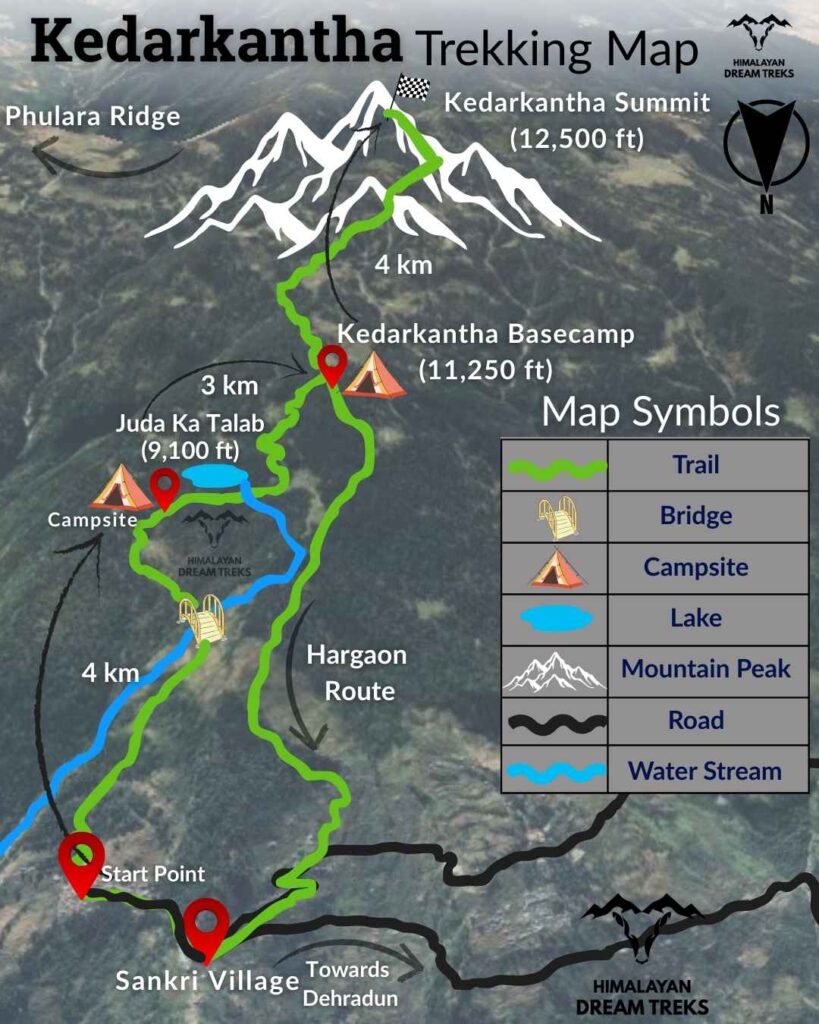
Kedarkantha is a year-round trekking destination, but it is most famous as a winter trek. The region experiences diverse weather conditions, with temperatures varying significantly across seasons.
Here’s a table summarizing the temperature and weather conditions in Kedarkantha throughout the year:
| Months/Season | Temperature | Weather Condition |
|---|---|---|
| Winter (Dec–Feb) | -15°C to 5°C | Heavy snowfall, freezing temperatures, challenging trekking conditions, perfect for snow lovers, the region is covered in snow, offering an unparalleled trekking experience. |
| Spring (Mar–Apr) | 0°C to 10°C | Snow starts melting, pleasant weather, good for trekking. |
| Summer (May–Jun) | 5°C to 20°C | Sunny, mild and clear weather, excellent trekking visibility. |
| Monsoon (Jul–Sep) | 10°C to 20°C | Heavy rain, foggy conditions, slippery trails, trekking not recommended. |
| Autumn (Oct–Nov) | -2°C to 10°C | Crisp and cool weather, clear skies, perfect for trekking, Wind and air quality are generally stable, providing good visibility. |
Read more info regarding Kedarkantha below
We have many folklore and religious mythological stories for about everything, especially in the mountains, one such story is –
Upon reaching the peak, the Kedarkantha Temple, made of loose stone arrangement, can be seen ornated with a Trishul (like a trident) with idols of Shiv ji, Parvati ji, and Ganesh ji.
It is believed that Lord Shiv decided to practice meditation here but was disturbed by surrounding bull so he left the place and went to Kedarnath, the famous temple now, to practise meditation.
Another story is like the one of Panch Kedar Temples, where the Pandavas were searching for Lord Shiv to uplift their curse of Brahman Htaya and Fatricide. But Lord Shiv was angry with them and hid in the Guptkashi region (The name itself is derived from this tale) in the form of a bull. When one of the Pandava Bheem identified him and started chasing the bull, Lord Shiv disappeared underground and reappeared in 5 different locations.
It is believed that Lord Shiv’s neck part appeared here, hence the name.
As Kedarkantha comes under Govind Pashu Vihar National Park, you will encounter various species of flora and fauna on your trek. In the year 2009, the Snow Leopard Project was started from here, making it essential and a reminder for you to be responsible trekker.
Flora
In Flora, you will see tall pine, maple, chir, oaks and deodar trees. Other common flora that are different from the rest of the country are horse chestnuts, walnuts, apple orchids, blue pine, silver firs, etc.
Trail of the Kedarkantha is filled with a diverse range of floral species that transform the landscape into a flower bed for nature lovers and photographers. As winter recedes and early spring arrives, typically from late March to April, the trail turns into a kaleidoscope of colors with wildflowers blooming in abundance.
Among the most beautiful floral species found along the trail is Reinwardtia (Yellow Himalayan Flax), a bright golden-yellow flower that adds more beauty to the meadows. Bauhinia variegata, commonly known as the Mountain Ebony, graces the region with its delicate pink and purple blossoms. The Primula denticulata (Drumstick Primrose), named for its unique spherical arrangement of tiny petals, thrives in the cool mountain air, painting the slopes in shades of violet and lavender.
A highlight of the Kedarkantha trek is the Rhododendrons, which bloom in hues of red, pink, and white, creating a contrast against the lush green backdrop. These flowers, revered in local culture, are not only admired for their beauty but are also used in traditional medicine and beverages. The Fragaria Nubicola (Himalayan Wild Strawberries), with their delicate white blossoms, later give way to tiny, flavorful berries enjoyed by trekkers and wildlife alike.
The Gentiana kurroo (Himalayan Gentian), a rare and medicinally significant plant, stands out with its deep blue or violet flowers, while the Persicaria capitata (Pink Knotweed) carpets sections of the trail with its soft pink clusters. The White Himalayan Lungwort, known for its medicinal properties, is another fascinating species that thrives in these high-altitude conditions. Completing this floral spectacle is the Viburnum grandiflorum (Grand Viburnum), a shrub with delicate white to pink flowers that enhance the beauty of the region.
Beyond their aesthetic appeal, these wildflowers play a crucial ecological role, supporting pollinators such as bees and butterflies while contributing to the region’s biodiversity. The ever-changing floral landscape of Kedarkantha makes each trek a unique experience, as different elevations and microclimates offer varied displays of flora.
For trekking enthusiasts, experiencing the Kedarkantha Trail during peak bloom season is an delightful journey. The interplay of beautiful flowers against the peaks creates an beautiful spectacle, making this trail a dream destination for trekkers, photographers, and families.
Fauna
In wildlife, you can encounter Asian black bears, European otters, musk deers, bharal, Himalayan tahr, civets, gorals and many more. In birds, you can spot Himalayan Monal Peasant (state bird of Uttarakhand), snowcock, bearded eagle, black eagle, owls, warblers, bulbul, and so on.
Take some time to read about the Leave No Trace Policy to understand and become a responsible trekker.
- Har Ki Dun Trek
- Lakha Mandal
- Mahasu Devta Temple, Hanol
- Ruinsara Tal
- Osla Village
- Bali Pass
Gallery
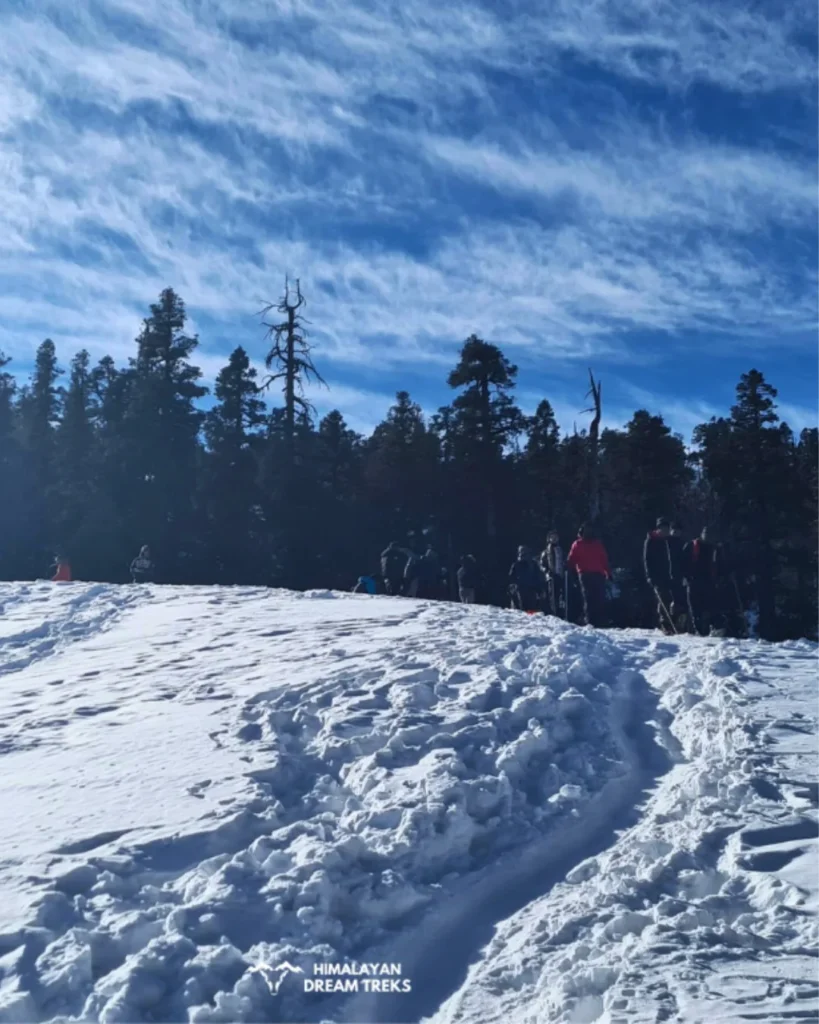
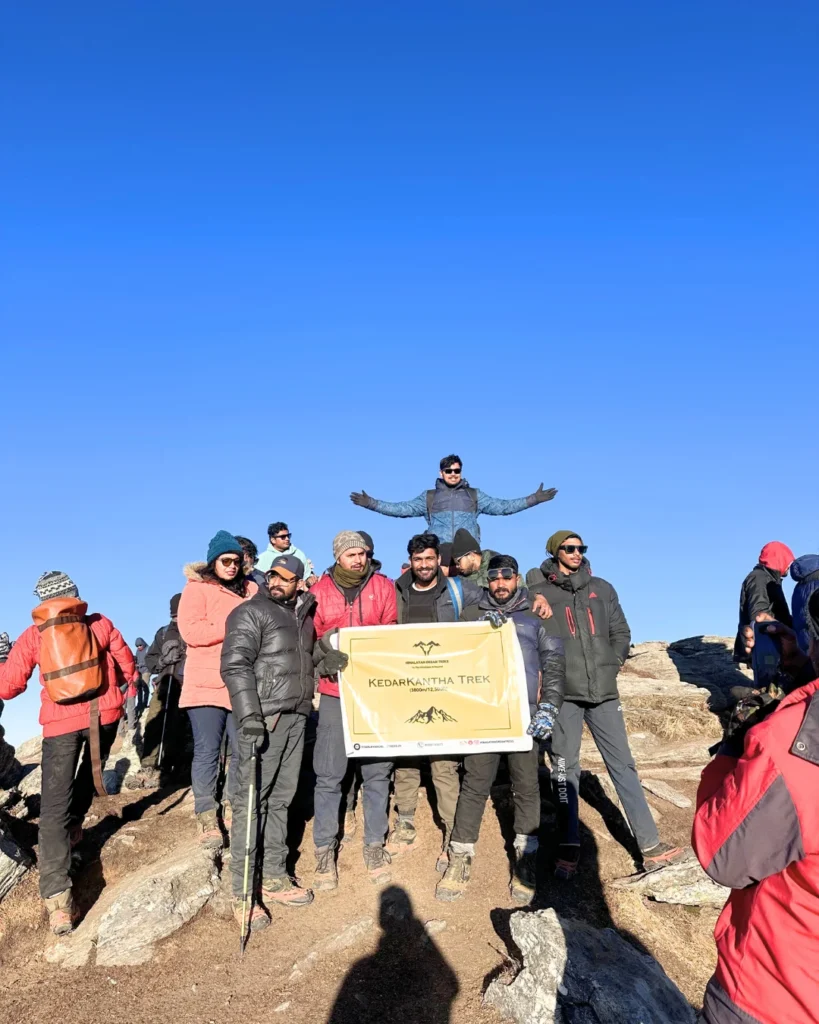
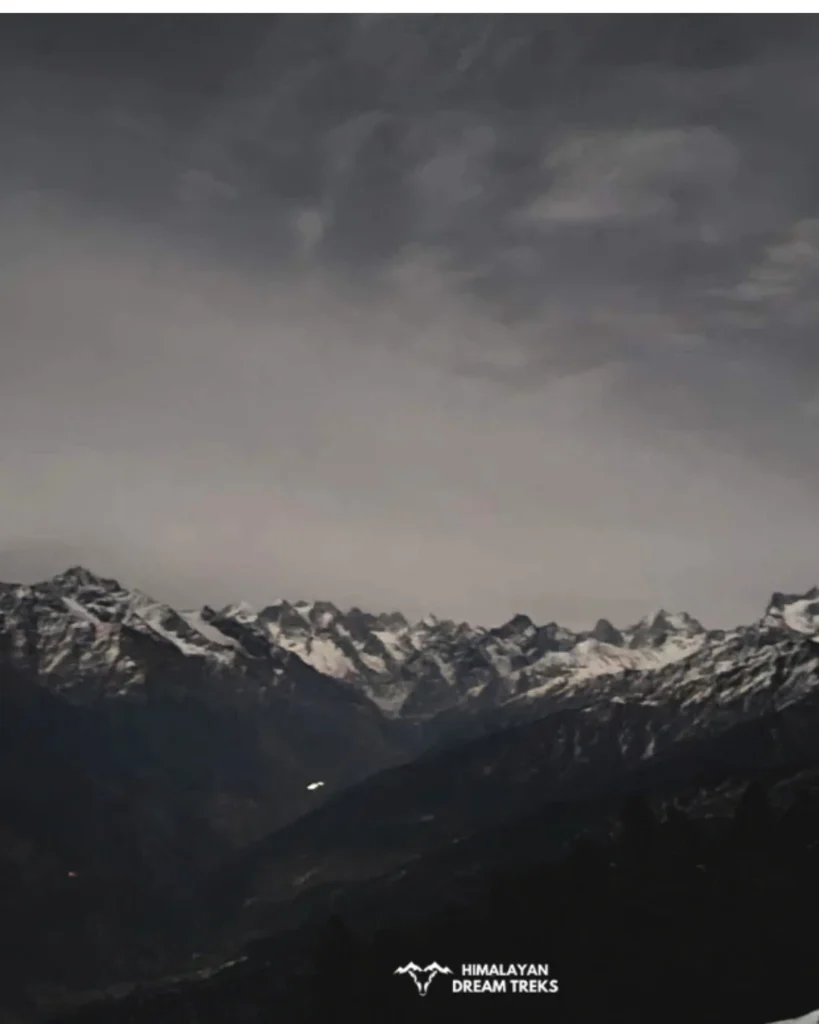
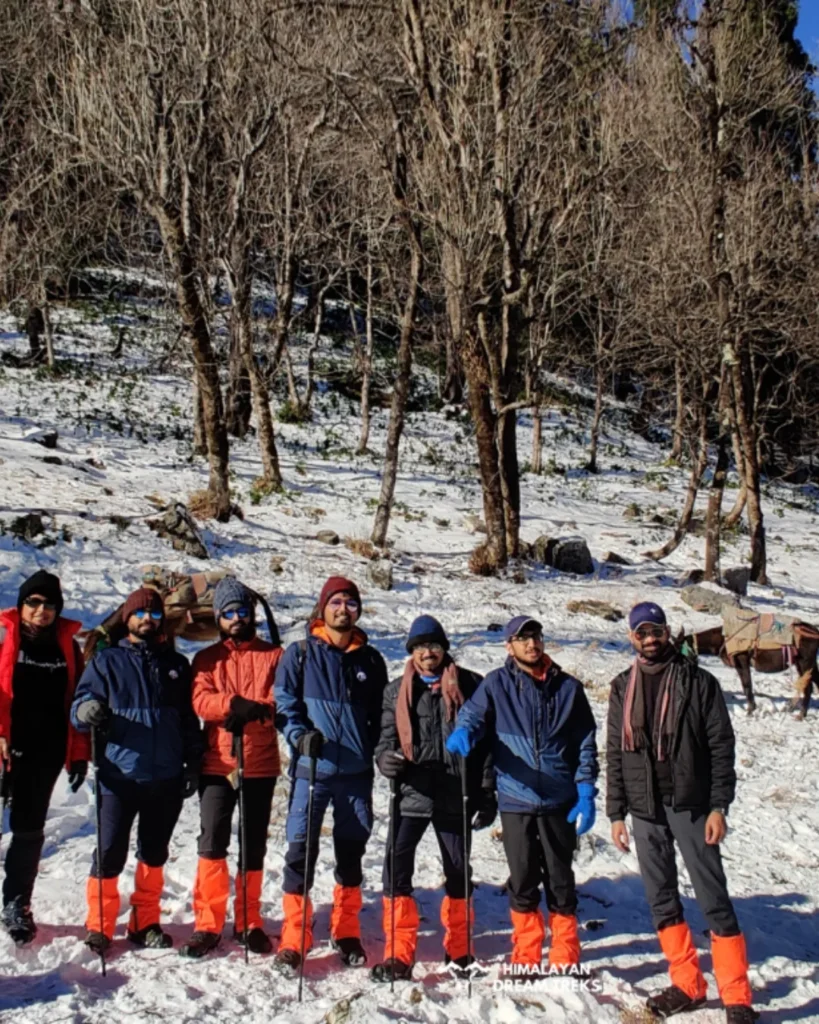
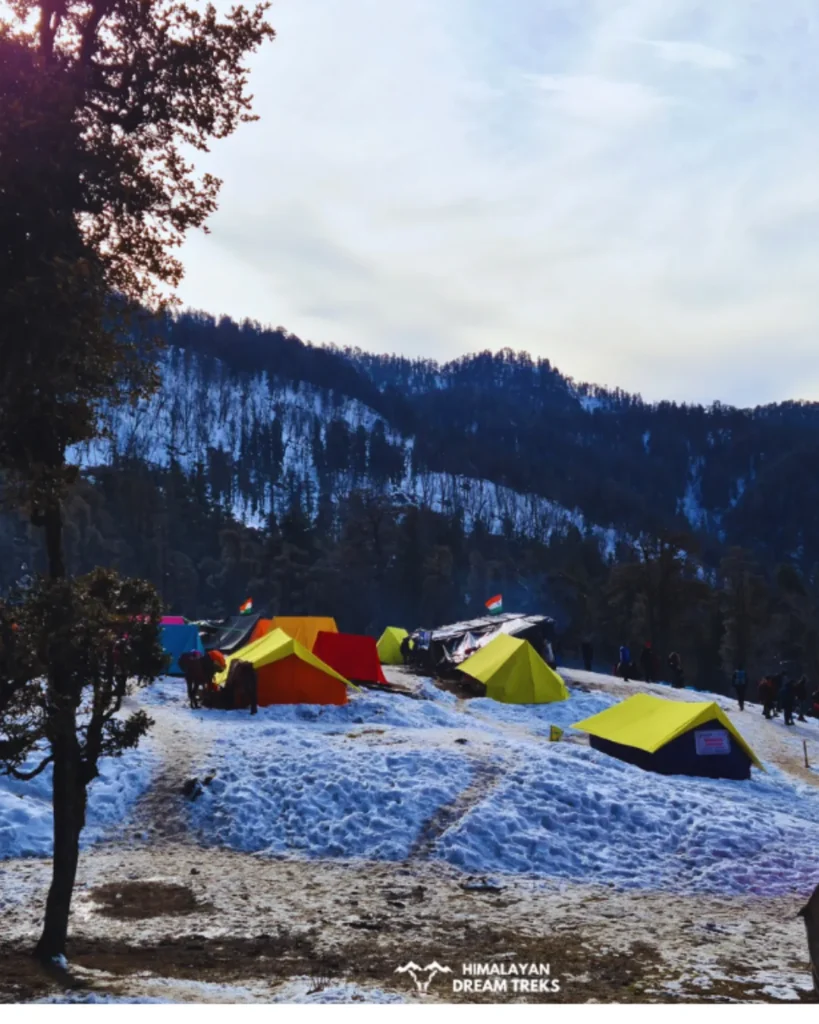
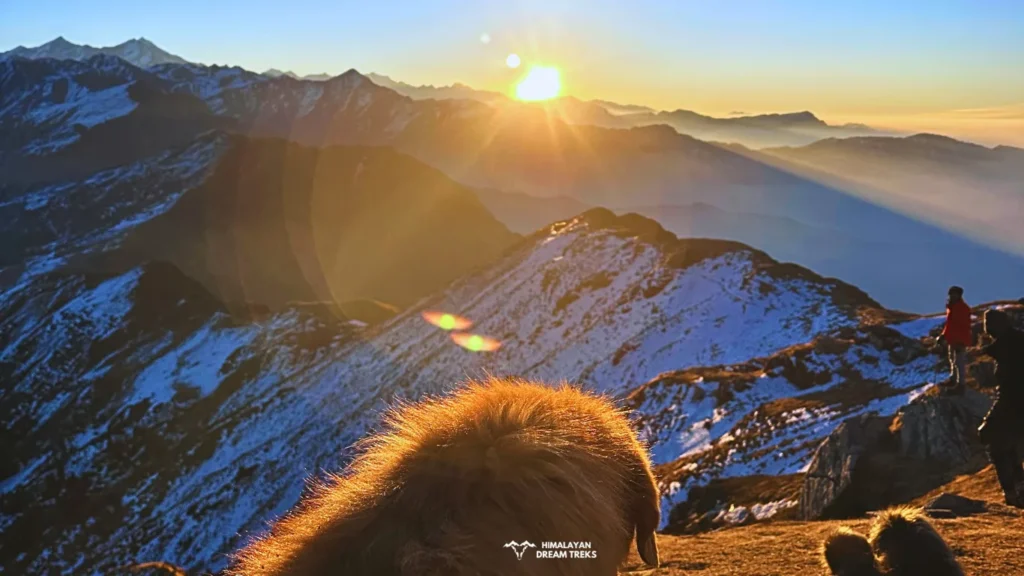
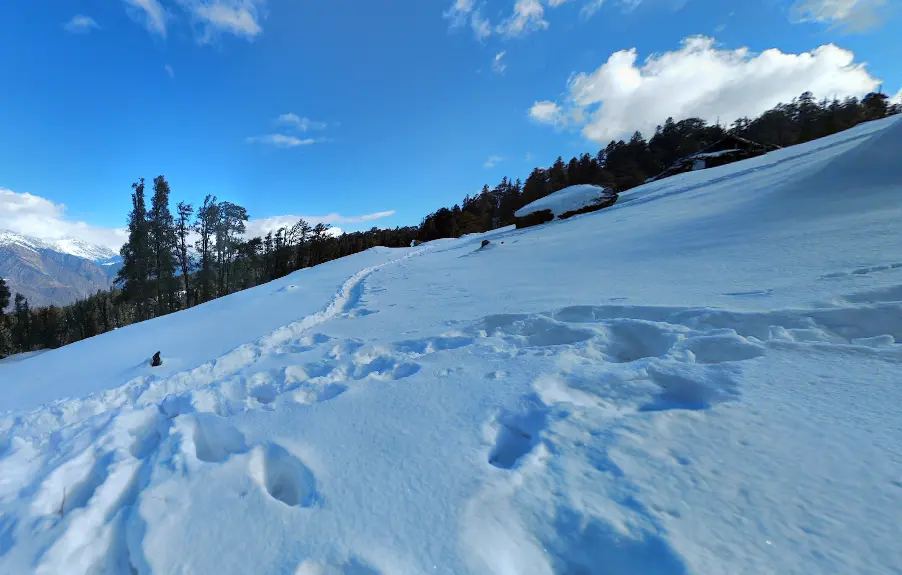

FAQs
Both are famous winter treks in Uttrakhand; Kedarkantha gives you the chance to climb a summit, whereas Dayara Bugyal provides a meadow walk.
It is advised to withdraw cash from Dehradun itself. You might find other ATMs en route, but they remain mostly cashless and stopping vehicles like this also hampers our timeline.
The trip cost of the Kedarkantha Trek varies from INR 6,000 to INR 12,000, depending on the itinerary, group size, inclusive services, starting point, and the time of the year, you are planning for trekking.
Being a local tour operator and listed as a certified trekking company, HDT offers the Kedarkantha Trek Package (5D/4N) without transportation from Sankri to Sankri at INR 5,499/- per person and with transportation from Dehradun to Dehradun at INR 6,999/- per person, inclusive of 5% GST (Goods and Services Tax).
With the 5D/4N itinerary, the package is inclusive of essential services like transportation, accommodation, meals, certified guide or trek leader, local sightseeing options, trail permit, and activities. As an on-ground tour operator, we have expertise in making arrangements and handling logistics to provide an unparalleled experience for our guests.
To make your trekking experience as convenient and enjoyable as possible, our travel experts and dedicated support staff are available 24/7 to help you with any queries or issues related to the trek.
If you’re looking for a private holiday package for the Kedarkantha Trek, we offer tailor-made adventure holidays in the Uttarakhand Himalayas, providing our guests with a hassle-free experience. Whether you’re a solo traveler, a group of friends, or a family, you can opt for your personalized trekking program. Kedarkantha trek package for a convenient and planned adventure. This option will allow you to enhance the quality of inclusive services of facilities such as accommodation, transportation, meals, or add-ons for any other requirements. Take a look at the features that make a customized tour package different from a ready-made plan for the trek.
- Itinerary: Design your itinerary instead of following a pre-designed one. This will allow you to experience more sightseeing options and activities. Our travel experts can help you with this, or you can provide an itinerary that best suits your requirements.
- Transportation: We provide you with a well-maintained, neat & clean vehicle of your choice (Swift/Ertiga/Innova/Tempo Traveler) to travel from Dehradun to Sankri Base camp and back. This transport service will be dedicated only to your group.
- Accommodation: We provide comfortable & cozy homestay accommodation in Sankri, and during the trek, you will be provided with the best camp stay (A-Shape/North Face/Mountain Hardware).
- Meals: For an unparalleled trekking experience, the meal plan is a core factor of service inclusions. You can provide your own meal routine and list of items to be included/excluded, ensuring they best suit your requirements.
- Equipment: Like the standard package, there will be neat & clean equipment, but in dynamic packaging, you can add extras such as air mattresses, air pillows, inner liners, upgraded sleeping bags, trekking poles, hiking boots, extra oxygen cylinders, etc.
- Private Group: Switching from a group departure to a private one is mostly preferred by families and trekkers who want a personalized experience of hiking in the mountains. No other participants will be added to your group. We offer you the option to have a dedicated group exclusively just for you, with enhanced services or the same services as a standard package.
Yes, Kedarkantha Trek is perfect for all age groups, and we have often seen 10-year-old children on this trail walking with ease as if they were locals of the region. It is a easy-moderate trek with no significant difficulties to deal with, except the last summit section which is sometime a challenging part of the trek for children. Obviously, it is a mountain trek, and dealing with challenges like sickness, difficult terrain, and other factors is common, but it’s completely manageable, which is why this trek is perfectly suitable for families with children.
To experiencing snowfall, it is in peak winter from mid-December to January. During this period, it experiences the best snowfall of the season, and the entire trail is covered with a blanket of fresh snow, creating a beautiful winter wonderland in the Uttarakhand Himalayas. At this time, it attracts all the adventure and nature enthusiasts from all over India, making this trek a “must-do” in peak winter.
Snowfall generally begins at the start of December, peaks in January, and lasts until early February. However, unexpected snowfall has occurred in past years; in 2019, it was recorded in mid-October, and in 2022, it started in early February. Therefore, predicting the exact timing of snowfall can be quite uncertain and no one can guarantee when you will experience it. If you are planning to experience the best snowfall, it is strongly advisable to get regular updates from current weather forecasts.
Yes, the Kedarkantha Trek is a safe and enjoyable trek, suitable for beginners. It has well-marked trails and manageable elevation gains. The trek is classified as easy to moderate in terms of difficulty, while passing through forests with a gradual ascent and reaching the maximum altitude of 12,500 ft (3,810 m) with the total trek distance of 20 km. However, arrival at altitudes above 8,000 feet increases the chances of AMS, but proper acclimatization and basic physical fitness are sufficient to prevent this challenge. And, to convert the difficulty of the winter snow into a wonderful experience, proper gear, following beaten paths over the snow-covered trails, and following your guide’s instructions are must.
Kedarkantha Trek is one of the most beautiful and popular winter treks in the Garhwal Himalayas, perfect for beginners and experienced trekkers. Its snow-covered trails, dense forests, beautiful frozen lake, thrilling summit push, stunning sunrise, and the most rewarding views of Himalayan peaks make Kedarkantha Peak a unique winter trekking destination, famous among adventure and nature enthusiasts.
Also, Kedarkantha is connected with a mythological story told by locals, where Lord Shiva is believed to have meditated for many years in the past. The temple at the top of the peak was meant to be the original Kedarnath Temple; however, there is no clear evidence to support this claim. Additionally, as per the legend, the Juda ka Talab lake is also associated with Lord Shiva, adding great spiritual significance to the lake.
Along with the religious aspect, the trek boasts unique natural beauty, especially when the entire trail gets covered in snow during winter, transforming it into a beautiful winter wonderland. The trek provides breathtaking views of some of the most prominent Himalayan peaks, including Mt. Swargarohini, Black Peak, and Bandarpunch, as well as other mountain ranges like Ranglana, Gangotri, Yamunotri, and the Sarutal Range.
The trek route takes about 2-3 days to reach the Kedarkantha peak from Sankri base camp, covering a distance of approximately 20 kilometers (12.5 miles) for the entire route. The height of Kedarkantha is 12,500 feet (3,810 meters) above sea level, that is accessible from Kedarkantha Basecamp with a steep ascent of 1,250 feet elevation gain. The trek route from here requires navigating certain steep stretches to reach the summit. This trail section towards the summit of Kedarkantha is very steep and can really test trekkers especially beginners’ physical strength.
You should not do it on your own without a guide. Officials have made it mandatory to obtain a trekking permit in your name and require you to be accompanied by a BMC-certified trek leader or guide.
First, you need to reach Dehradun from your hometown. From there, our guide/driver will lead you. The pickup point is near Dehradun Railway Station, Prince Chowk. The journey to Sankri, the starting point of our trek, takes approximately eight hours by road.
During the journey, you might experience motion sickness, so it’s advisable to carry a motion sickness tablet. Also, avoid eating unhealthy or heavy food since you will be traveling in a bus, tempo traveler, or Bolero for the entire day. The road condition is generally good, but some stretches between Mori and Sankri are under construction.
The journey is beautiful—you will witness the Yamuna River in its purest form, dense forests, and even some wildlife of the region.
At Sankri base camp, only Jio works well, but beyond that, the network fluctuates and sometimes disconnects. At the summit, you have a great opportunity to talk and share your experience with your family and friends, as you will get full network coverage for all major providers, including Jio, BSNL, Airtel, and VI.
Electricity is available only at Sankri base camp.
Rentals are available, costing around INR 2,000–3,000 per person for all required gear. Power banks are also available for rent.
Trek Reviews
I had an incredible time on the Kedarkantha trek, meeting lots of new friends along the way. Our trek guide, Mr. Sobey Negi from Himalayan Dream Treks, was more than just a guide—he was like a brother and a friend. A genuinely good person, he was incredibly helpful and caring throughout the journey.
Thanks to the Himalayan Dream Treks team! Looking forward to trekking with you again!

Kushal Hari
The whole team was very supportive and responsive, at extreme weather as it was in Kedarkantha they provided hot and healthy food, plus hot water whenever you asked for it. The guides were supportive and friendly in nature.

Arvind Karir
Similar Treks
7,499
/ Per Person
Available Dates
| Group Dates | Status |
| 4 Feb 2025 | Booking Open |
| 9 Feb 2025 | Booking Open |
| 11 Feb 2025 | Booking Open |
| 25 Feb 2025 | Booking Open |
Talk with our Trek Experts: +91 80896 93825 / +91 94565 46051
| Group Dates | Status |
| 1 March 2025 | Booking Open |
| 8 March 2025 | Booking Open |
| 15 March 2025 | Booking Open |
| 22 March 2025 | Booking Open |
| 29 March 2025 | Booking Open |
Talk with our Trek Experts: +91 80896 93825 / +91 94565 46051

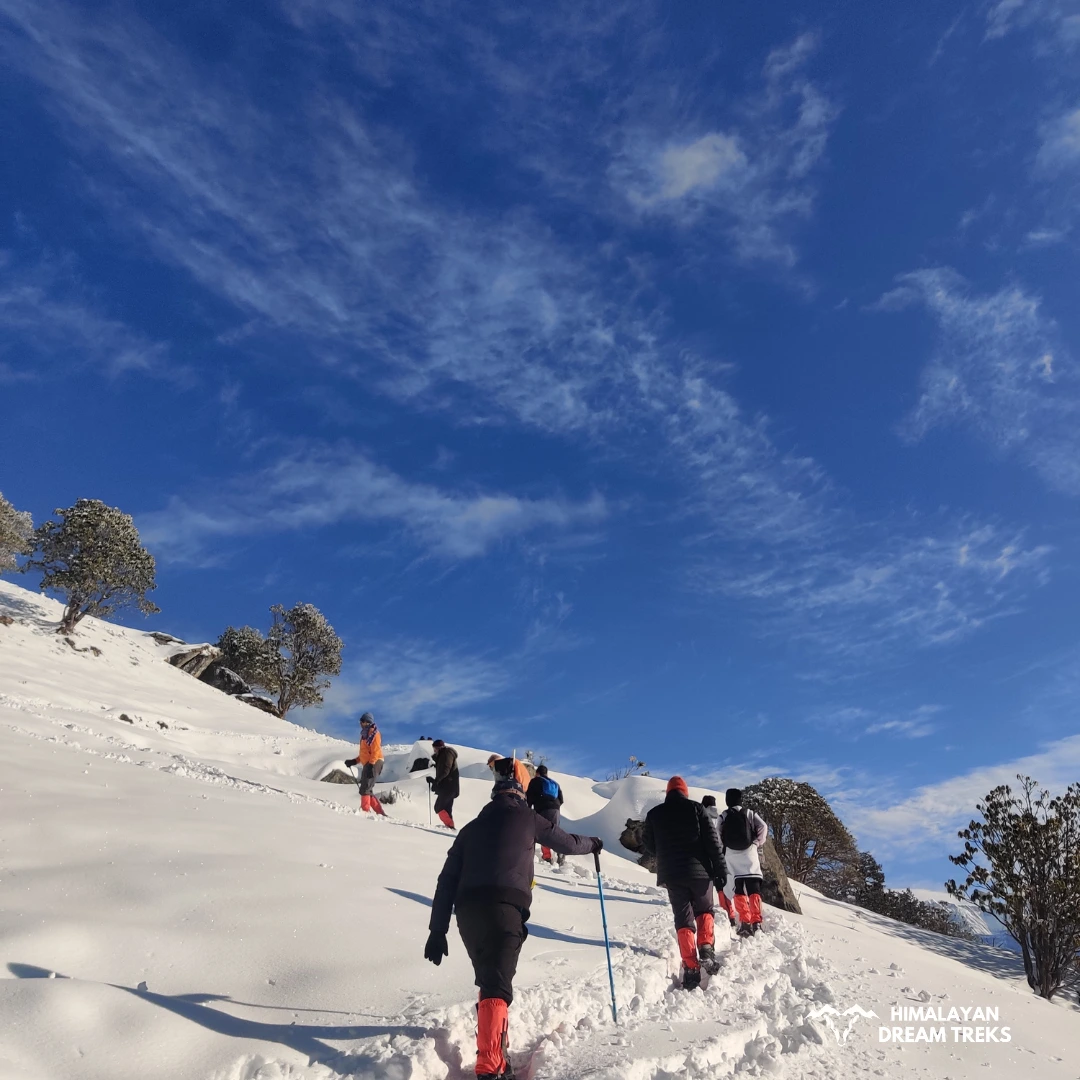
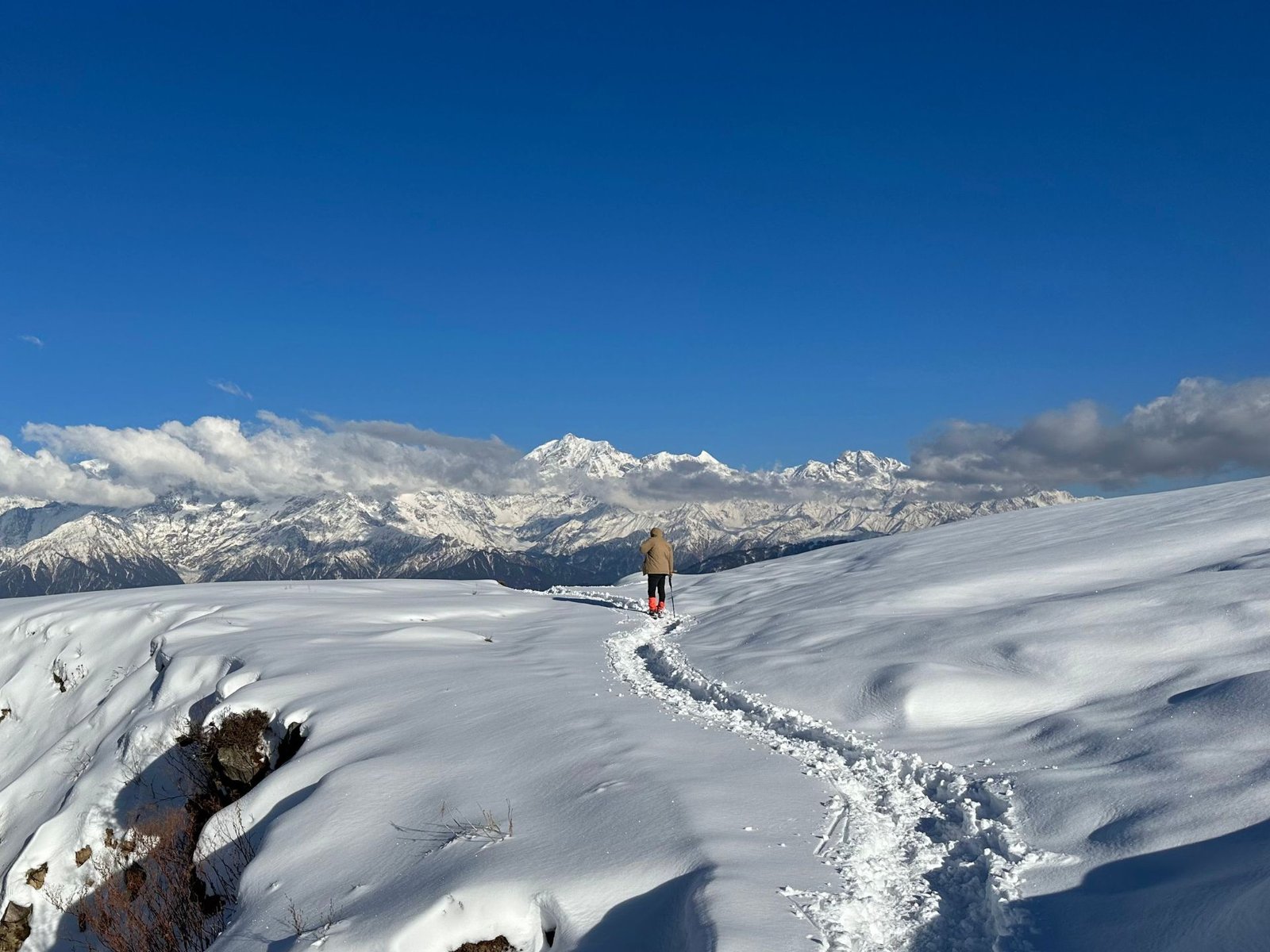
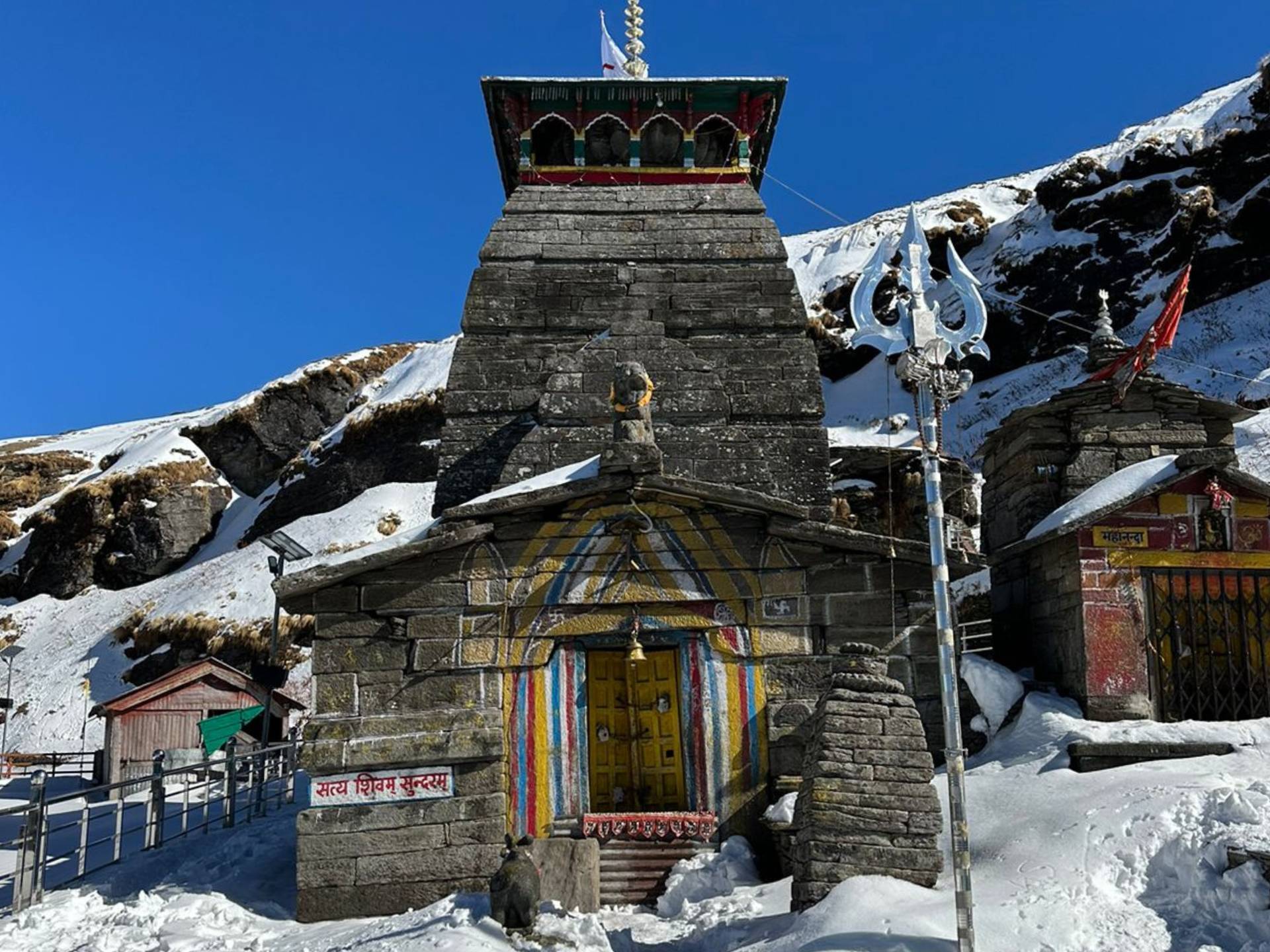


Leave a Comment